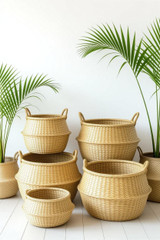Persian Miniature Painting: A Timeless Tradition of Art
Persian Miniature Painting: A Timeless Tradition of Artistic Expression
Persian miniature painting, a captivating and intricate art form, stands as a testament to the rich cultural heritage and artistic achievements of Iran. Emerging in the early centuries of Islamic rule in Persia, these miniatures have evolved over centuries, reflecting the region's historical, literary, and religious narratives. This traditional art form is renowned for its exquisite detail, vibrant colors, and the seamless blending of various influences, making it a unique and enduring element of Persian culture.
Historical Evolution
The origins of Persian miniature painting can be traced back to the pre-Islamic era, with significant developments occurring during the Islamic Golden Age (8th to 13th centuries). It was during the Ilkhanid period (13th to 14th centuries) that Persian miniatures began to flourish, influenced by Chinese artistic techniques brought by Mongol invaders. The Timurid and Safavid dynasties (14th to 17th centuries) marked the zenith of this art form, with royal patronage fostering the creation of some of the most iconic works.

Artistic Characteristics
Persian miniatures are distinguished by their meticulous attention to detail and the use of vibrant, natural pigments. The artists employed a variety of tools, including fine brushes made from squirrel hair, to achieve the intricate lines and delicate shading characteristic of these paintings. Common themes include scenes from Persian literature, particularly the epic poems of Ferdowsi's "Shahnameh" (Book of Kings) and the romantic tales of Nizami's "Khamsa" (Five Treasures). The compositions are often elaborate, with multiple figures and complex architectural elements arranged in a harmonious balance. The use of perspective is unique, with a combination of bird's-eye views and frontal projections creating a sense of depth and space. The backgrounds often feature lush gardens, flowing rivers, and ornate palaces, reflecting the idealized vision of paradise found in Persian literature and Islamic art.
Cultural and Religious Significance
Persian miniature painting is not merely an artistic endeavor but also a medium through which cultural and religious values are expressed. The miniatures frequently illustrate scenes from Islamic history, Persian mythology, and Sufi mysticism, serving both as educational tools and as a means of preserving cultural heritage. The incorporation of calligraphy, often in the form of poetic verses, further enriches the narrative and aesthetic appeal of the miniatures.
Influences and Techniques
The development of Persian miniature painting was significantly influenced by various artistic traditions, including Chinese, Central Asian, and Islamic art. The fusion of these diverse elements resulted in a distinctive style that is both aesthetically pleasing and symbolically rich. Techniques such as the use of gold leaf, intricate patterns, and the incorporation of fine textiles in the depiction of clothing and drapery are hallmarks of this art form. One of the most notable techniques is the "nasta'liq" script, a form of Persian calligraphy that is often integrated into the compositions. This script is known for its flowing, graceful lines and is considered an art form in itself. The harmonious integration of text and image is a defining characteristic of Persian miniature painting, creating a cohesive and immersive experience for the viewer.
Preservation and Contemporary Relevance
Despite the passage of time and the challenges posed by modernity, Persian miniature painting continues to thrive. Efforts to preserve this traditional art form are evident in the numerous workshops, museums, and cultural institutions dedicated to its study and promotion. Contemporary artists draw inspiration from traditional techniques while infusing modern elements, ensuring that Persian miniature painting remains a dynamic and evolving art form.
Conclusion
Persian miniature painting is a magnificent representation of Iran's artistic legacy. Its intricate designs, vibrant colors, and profound cultural significance make it a treasured aspect of Persian heritage. As both a historical record and a source of aesthetic pleasure, these miniatures offer a glimpse into the soul of Persian civilization, highlighting the enduring power of art to transcend time and connect generations.
Recent Posts
-
Order the Best Boss Day Gifts for Male & Female Bosses in the UAE from Craftihouse.com
Every year, Boss’s Day is the perfect opportunity to show appreciation for the people who lead, ment …13th Oct 2025 -
How This Gift Came to Life: The Story Behind Our Palm Leaf Baskets
How This Gift Came to Life: The Story Behind Our Palm Leaf Baskets In a world where everything is be …8th Oct 2025 -
Handmade Leather Key Chains – Timeless Souvenirs & Everyday Companions
Handmade Leather Key Chains – Timeless Souvenirs & Everyday Companions Introduction In a world where …25th Sep 2025




